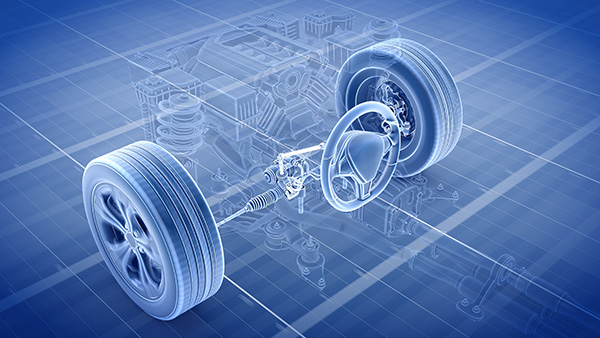
Car steering is one of those everyday marvels we often take for granted. You hop in your car, turn the wheel, and voilà – your car obeys your every command, smoothly navigating curves and corners. But have you ever thought about how this magical process works? Understanding the intricacies of car steering satisfies curiosity and can help you become a more informed and responsible driver.
The Basics of Car Steering
At its core, the steering system is designed to convert the steering wheel's rotational movement into the angular movement of the car's wheels. This sounds straightforward, but it involves a complex interplay of various components working harmoniously.
The Steering Wheel and Column
The journey of controlling your car begins with the steering wheel. When you turn the steering wheel, it rotates a shaft known as the steering column. This column is connected to a system of gears that amplifies the force you apply, making it easier to turn the wheels. Imagine turning the wheels directly without this system; it would require significant effort, especially at lower speeds or when the vehicle is stationary.
The Rack and Pinion System
The rack and pinion mechanism is the heart of most modern steering systems. When you turn the steering wheel, it rotates a pinion gear, which then moves a flat, toothed component called the rack. The movement of the rack translates the rotational motion of the steering wheel into the linear motion needed to turn the car's wheels.
Advantages of Rack and Pinion:
Provides precise steering control.
More straightforward and less bulky compared to older systems.
Enhances the driver's feedback and connection with the road.
Power Steering – Making Life Easier
In the past, steering a car required considerable physical effort, especially at low speeds or when parking. Enter power steering—a game-changer for drivers everywhere. Power steering systems use hydraulic or electric actuators to assist in steering the wheels, significantly reducing the effort required from the driver.
Hydraulic Power Steering
Hydraulic power steering uses a pump, usually driven by the engine, to circulate hydraulic fluid under pressure. This fluid applies force to the steering gear, helping you turn the wheels more easily. While highly effective, hydraulic systems can be complex and require regular maintenance to check for fluid leaks and ensure the pump is working correctly.
Electric Power Steering
Electric power steering (EPS) is a newer, more efficient technology. Instead of hydraulic fluid, EPS uses an electric motor to provide the necessary assistance. This system is more straightforward, requires less maintenance, and can even be more fuel-efficient since it doesn't rely on engine power. Plus, EPS systems can be integrated with advanced driver assistance systems, paving the way for semi-autonomous driving features.
Steering Linkages
The steering linkage is a critical component that transfers movement from the steering wheel to the car's wheels. It includes various rods and joints that ensure smooth and consistent motion transmission.
Tie Rods
Tie rods are essential parts of the steering linkage. They connect the steering gear to the wheel assemblies, transmitting the force needed to turn the wheels. Proper maintenance of tie rods is crucial as worn-out tie rods can lead to poor handling and increased tire wear.
Pitman Arm and Idler Arm
In systems like the recirculating ball steering, the pitman arm and idler arm play significant roles. The pitman arm is attached to the steering gear and moves with it, while the idler arm supports the opposite end of the center link, ensuring stability and proper alignment of the steering linkage.
Steering Geometry and Alignment
Steering geometry refers to the various angles and measurements that ensure your car handles well and drives straight. Key aspects include:
Regular alignment checks are vital for maintaining optimal steering performance and prolonging tire life. Misalignment can cause the car to pull to one side, reduce fuel efficiency, and increase tire wear.
Notice a bit of play in your steering wheel? It might be time for a check-up. Drive into Neighborhood Tire Pros and let our professionals take care of it.